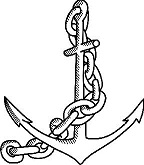
1 The Anatomy of Default Thinking
The ‘default' is defined as an option that is selected automatically unless a viable alternative is specified.[1] It's influenced by the sum of our experiences, and is usually the option that requires the least effort (or least angst/uncertainty/discomfort) for the most short-term gain.
‘But from whence does the default come? ' I hear you ask. Well, linguistically, ‘default' stems from the Old French word ‘defaut', which in turn stems from ‘defaillir' or ‘to fail' (from ‘fallere' — a Latin word meaning ‘disappoint' and ‘deceive').
Failure, disappointment or deception, eh? Fun. This connotation of default typically applies to not meeting a loan repayment — but there's an important message for leadership in this, too. Rely solely on default thinking, and you're going to encounter disappointment.
But, enough of that! Don't tempt me with further discussions of linguistics and semantics — I hold a doctorate in philosophy, which makes me quite inclined to engage in confusing and somewhat-irrelevant tangential pursuits of linguistic and philosophical whimsy. *sets cognac aside*
Now, in practical terms, the default comes from our ability to recognise, match and leverage patterns.
This is what Daniel Kahneman — Nobel Prize winner and author of Thinking, Fast and Slow — might describe as ‘system 1 thinking'.[2] This type of thinking is fast, automatic, ...
Get How To Lead A Quest now with the O’Reilly learning platform.
O’Reilly members experience books, live events, courses curated by job role, and more from O’Reilly and nearly 200 top publishers.

